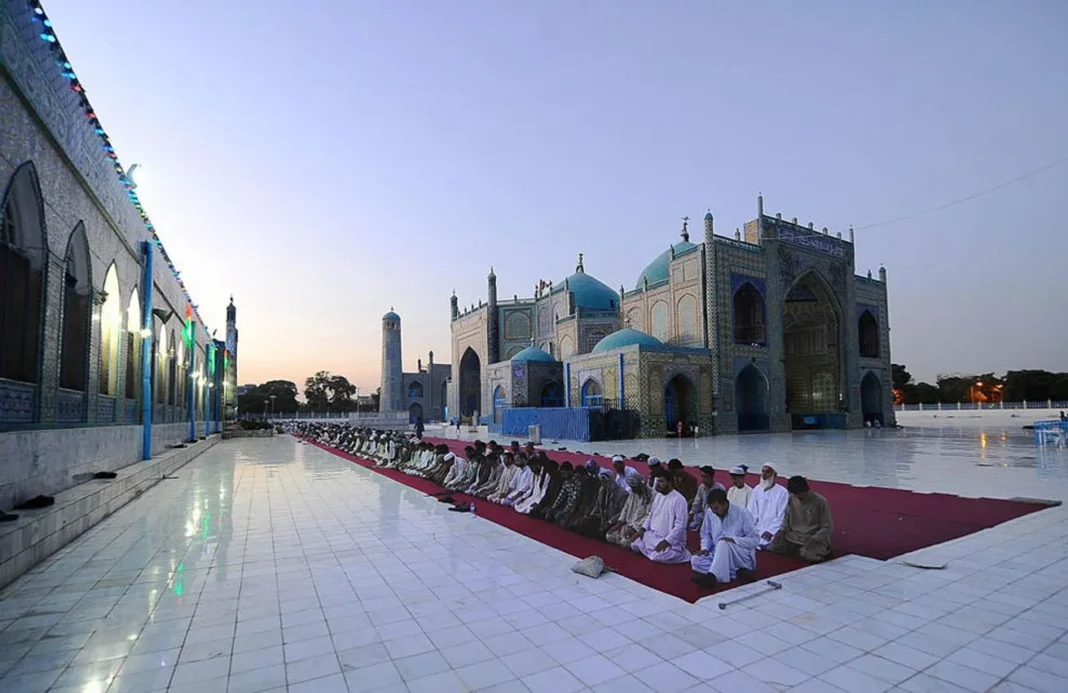Unraveling the History of Mazar-i-Sharif
Mazar-i-Sharif’s story begins in the 12th century, founded upon a dream by a local mullah. He envisioned the burial site of Ali bin Talib, a revered figure in Islam. Thus, the city grew around the sacred Shrine of Hazrat Ali, attracting pilgrims and shaping its identity. Mazar-i-Sharif flourished under different empires, leaving behind a legacy of stunning architecture and a blend of cultures.
Architectural Wonders
- Shrine of Hazrat Ali (The Blue Mosque): The heart of Mazar-i-Sharif, this magnificent mosque boasts intricate tilework and a sense of serenity.
- Qala-i-Jangi Fortress: A historic fort with a complex past, offering insights into the region’s military history.
- Takht-e Rustam: Ruins hinting at the region’s ancient Greek heritage.
Museums and Galleries Mazar-i-Sharif
While not as extensive as in larger cities, Mazar-i-Sharif does offer museums and galleries that shed light on its history and culture. Consider seeking these out for an enriching experience.
Language and Religion Mazar-i-Sharif
- Language: The primary languages spoken are Dari and Pashto, with Uzbek also present due to the city’s diverse population.
- Religion: Islam is the dominant religion, with particular reverence for the Shrine of Hazrat Ali, a pilgrimage site for Shia Muslims.
Accommodation Options
Mazar-i-Sharif offers a range of accommodation from guesthouses catering to pilgrims to more modern hotels.
- Budget-friendly: Guesthouses are plentiful, particularly near the Blue Mosque.
- Mid-range: Several hotels offer comfortable rooms and amenities.
- Luxury: Limited, but more options may be emerging.
Transportation
- Getting there: Mazar-i-Sharif has an international airport with flights from Kabul and potentially other regional cities. Road travel is possible but requires careful consideration of security conditions.
- Within the city: Taxis are common. Negotiate fares beforehand.
Currency and Payment
The Afghan Afghani (AFN) is the official currency. Cash is prevalent, though cards might be accepted at larger hotels. It’s best to have cash on hand, mainly in smaller denominations.
Flavors of Mazar-i-Sharif
Afghan cuisine is hearty and flavorful. Expect these highlights:
- Kabuli Pulao: Aromatic rice dish with lamb, raisins, and carrots.
- Mantu: Steamed dumplings filled with meat and spices.
- Bolani: Flatbread filled with savory or sweet ingredients.
Shopping and Entertainment
- Markets: Explore bustling bazaars for textiles, spices, handicrafts, and souvenirs.
- Tea Houses: Experience traditional Afghan hospitality over a cup of tea.
- Parks: Khalid Bin Walid Family Park offers some green space for relaxation.
Landmarks, Sightseeing, and More
- Beyond the Blue Mosque: Visit other smaller mosques and shrines.
- Balkh: Day trip to the ancient city for historical exploration.
Cultural Experiences Mazar-e Sharif
- Nawroz Festival: Join the vibrant celebrations of the Afghan New Year if visiting in March.
- Respect Local Customs: Dress modestly, especially when visiting religious sites. Women should cover their heads.
Safety and Regulations
- Current Situation: Research the security situation thoroughly before planning travel. The political and security landscape in Afghanistan can be complex and fluid.
- Regulations Always respect local laws and customs.
Emergency Services
Familiarize yourself with the location of any hospitals or clinics and have contact numbers of your embassy or consulate readily available.
Seasonal Activities and Climate in Mazar-e Sharif
- Climate: Mazar-i-Sharif has a hot desert climate with scorching summers and colder winters.
- Best Time to Visit: Spring (March-May) and autumn (Sept-Nov) offer milder temperatures.
Packing the Right Clothes
Pack loose, modest clothing in breathable fabrics. Regardless of the season, a headscarf (for women) and layers are essential.












